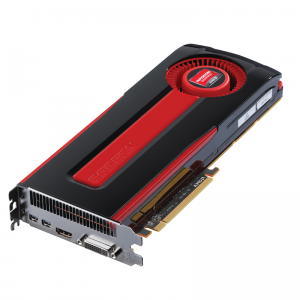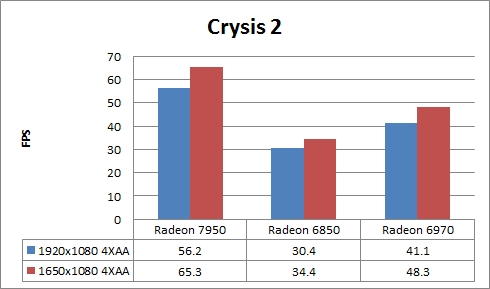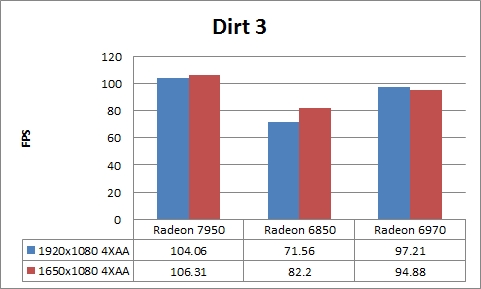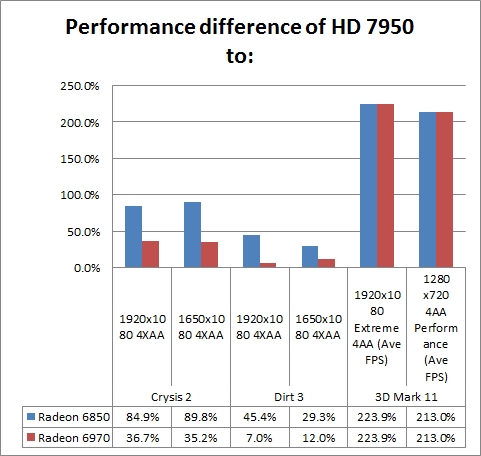JPR’s Robert Dow thinks it is even better than even the Radeon 6970.
By C. Robert Dow

Announced in December, AMD began shipping the HD7950 in mid-January. We received our review copy in mid-March. We have been anxious to put the board to work. For our tests, we run the most common benchmarks and then compare the results on price, performance, and power to put a product in perspective for consumers.
The 79xx series is based on AMD’s most recent Southern Island Series which are based on AMD’s Graphics Core Next (GCN) technology. The 79xx series are 28nm Tahiti GPUs. The HD7950 is the Enthusiast class add-in board (AIB) in the family, and compares favorably with other AMD AIBs as shown in the table.
AMD says it is eliminating reference designs for the 7950. All 7950s will be custom to some degree and use the partner’s choice of cooler, with a new PCB from AMD specifically for the 7950. In the next run partners will have the option of going with a totally custom design. Some of the partners will be shipping factory overclocked parts from the beginning; neither MSI or Sapphire have a stock clocked card as part of their lineup, which is going to make it impossible to make easy comparisons—differentiation is the name of the game. We’ve heard the low-end over-clocked AIBs will be shipping as low as 810MHz, while 900MHz is particularly common at the high-end.
Skipping the reference design will save AMD some time and money and give the ODMs more flexibility; however, AMD will have to limit it to the bigger firms with advanced PCB design tools—a GHz is still a GHz, and can’t be treated casually.
The features of the HD7950 include:
- 240GB/s memory bandwidth
- 2.87 TFLOPS Single Precision compute power
- 717 GFLOPs Double Precision compute power
- GCN Architecture
- 28 Compute Units (1792 Stream Processors)
- 112 Texture Units
- 128 Z/Stencil ROP Units
- 32 Color ROP Units
- Dual geometry units
- Dual Asynchronous
- Compute Engines (ACE)
- Up to 24x multi-sample and super-sample anti-aliasing modes
- Adaptive anti-aliasing
- Morphological Anti- Aliasing (MLAA)
The tests
We tested three AIBs, the HD 7950 against its predecessors the HD 6950 and the bigger HD 6970, using Futuremark’s 3D Mark 11, and two games: Crysis 2 and Dirt 3. We used Crysis 2, a DX11 benchmark, primarily for the graphics-specific demands it makes including hardware tessellation, motion blur, and shadows, all of which challenge the GPU. Dirt 3 has become an industry standard; it too is a DX 11 benchmark. It has smoke, particles, water, snow and mud. 3D Mark is, of course a good all-around benchmark designed for computer graphics with input from the graphics GPU makers.
We ran the tests on a 3.20 GHz Core i7 970 system with an Intel DX58SO2 AAG10925- 205 motherboard equipped with 8 GB RAM, and an Intel SSDSA2M160G2GC 160.04 GB SSD, running off an EVGA (Antec) 1200W Classified SR-2 power supply.
The Pmark compares price, performance, and power to provide a different perspective of the AIB. We believe it adds another, more useful layer of information to raw benchmarks.
What do we think?
The HD 7950 is in a different class from its predecessor the HD 6950, in that the 7950 is in the Enthusiast class and the 6950 was at the high-end of the Performance class. Therefore a comparison of the AIBs may not be fair. But who cares about fair anyway?










